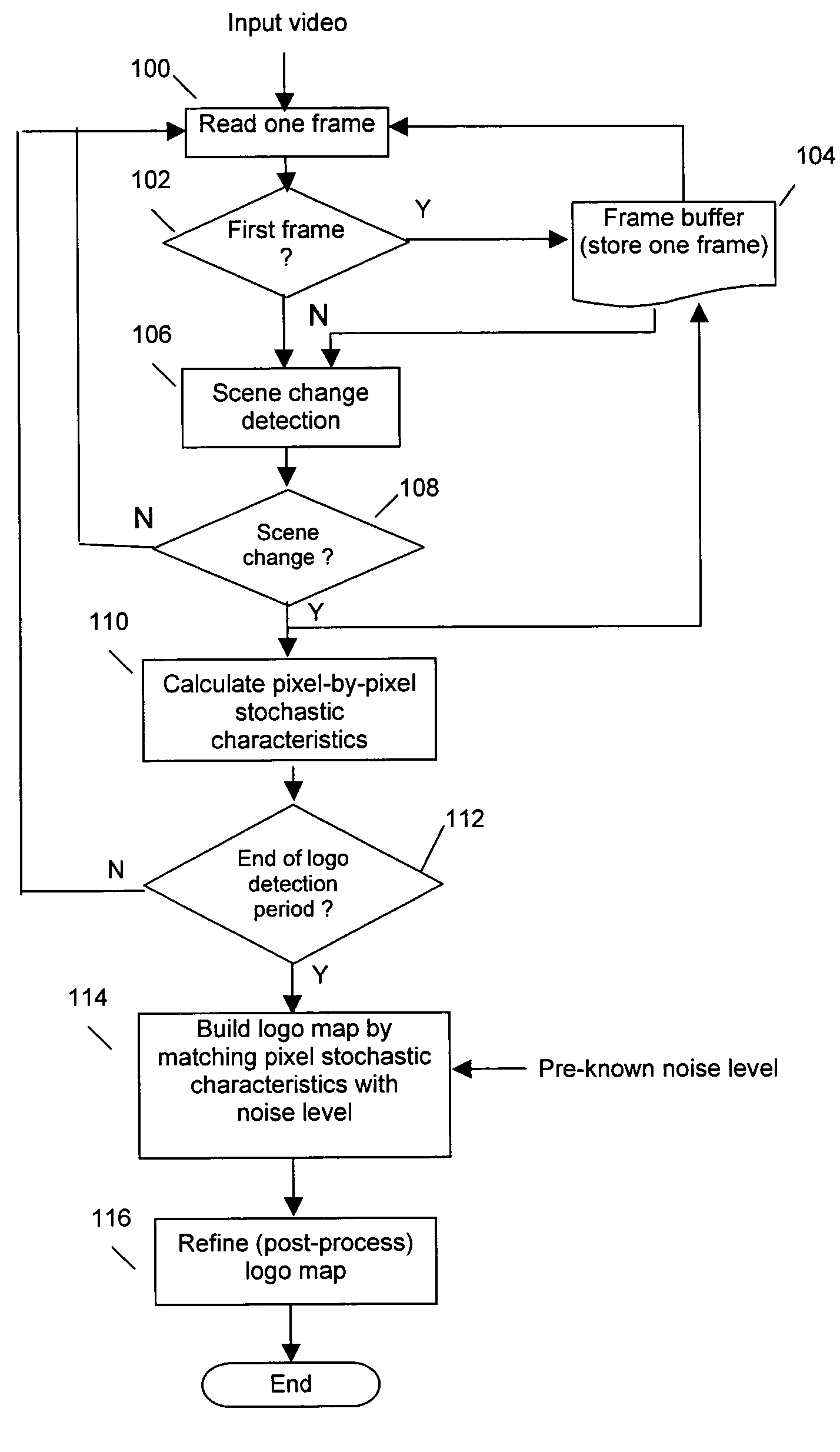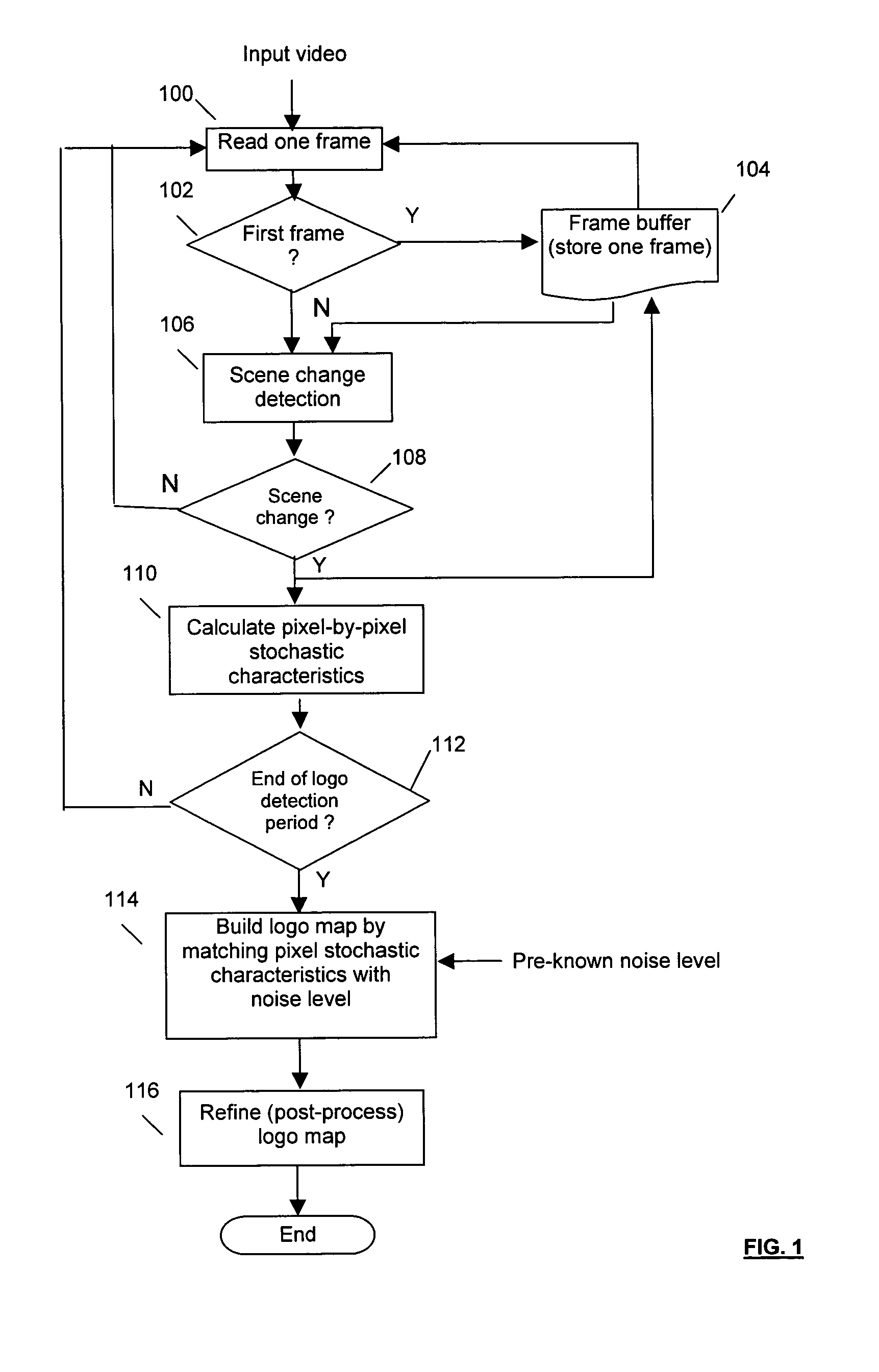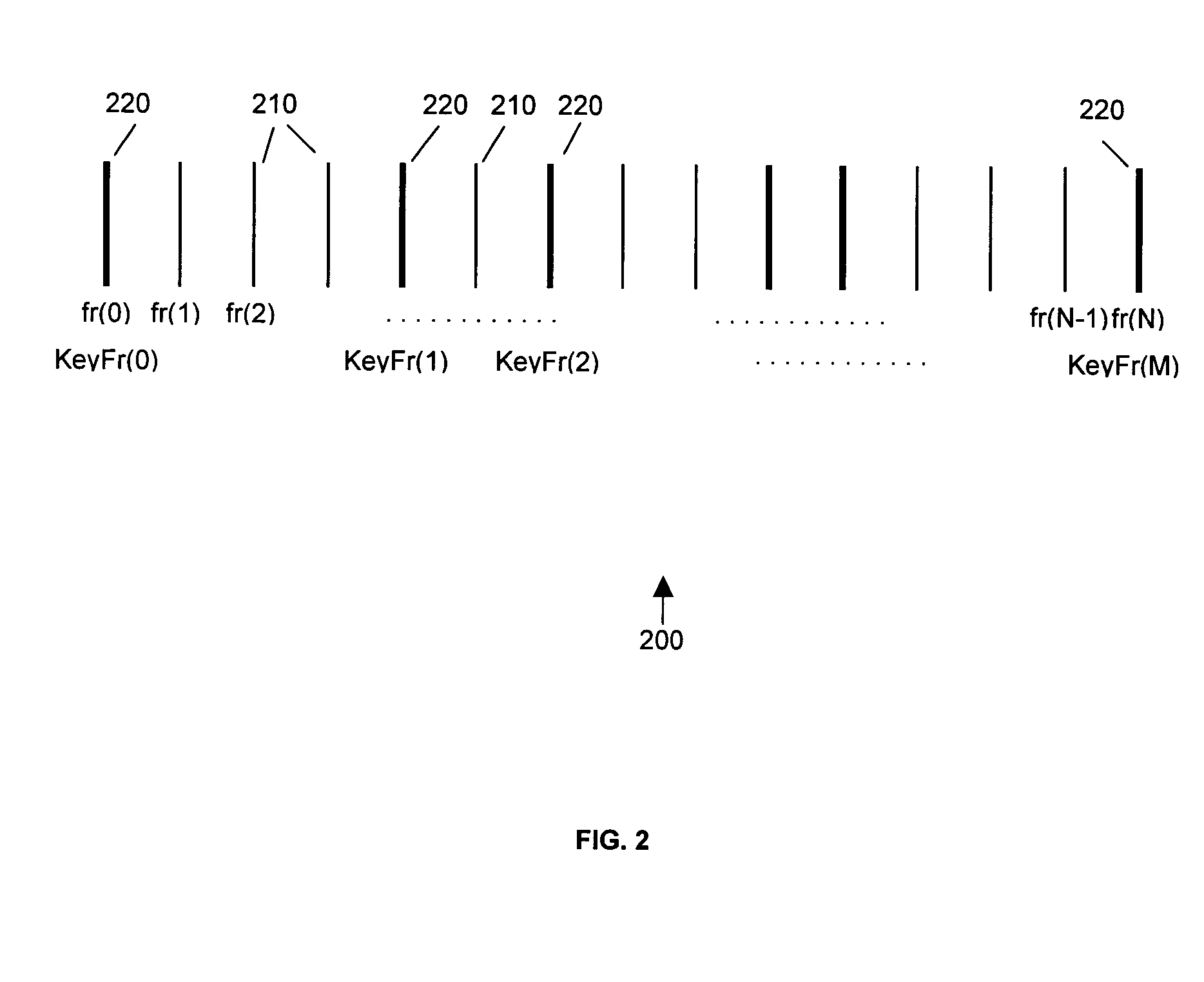Apparatus and method for detecting opaque logos within digital video signals
a technology of opaque logos and digital video signals, applied in the field of digital video display, can solve problems such as unreliability of detection of logos/non-logo pixels
- Summary
- Abstract
- Description
- Claims
- Application Information
AI Technical Summary
Benefits of technology
Problems solved by technology
Method used
Image
Examples
example observations
[0026]From example observations, the number of logo pixels in a frame is mostly less than e.g. 20% of the total number of pixels in the frame. Because pixel intensity value changes in the logo area should not contribute to the scene change, in one example the threshold t2 can be set to about 80% in the real-world applications. Further, the larger the threshold t2, the fewer scene changes will be detected.
[0027]FIG. 4 shows a flow chart of the steps of an example process for calculating the stochastic characteristic of each pixel in the video frame in the temporal domain, according to the present invention. Starting from the first in the current frame, the difference d(t) in pixel intensity between the pixel in the current frame and a corresponding one in the reference frame is calculated as
d(t)=p(t)−p(t−τ)
in step 400, wherein p(t) denotes the pixel intensity value in the current frame t, p(t−τ) denotes the corresponding pixel intensity value in the reference frame t−τ. If the pixel ...
PUM
 Login to View More
Login to View More Abstract
Description
Claims
Application Information
 Login to View More
Login to View More - R&D
- Intellectual Property
- Life Sciences
- Materials
- Tech Scout
- Unparalleled Data Quality
- Higher Quality Content
- 60% Fewer Hallucinations
Browse by: Latest US Patents, China's latest patents, Technical Efficacy Thesaurus, Application Domain, Technology Topic, Popular Technical Reports.
© 2025 PatSnap. All rights reserved.Legal|Privacy policy|Modern Slavery Act Transparency Statement|Sitemap|About US| Contact US: help@patsnap.com



